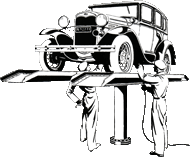
Model A & B & Model 46
Model A Ford Garage
Intake Manifold and Carburetor Mounting Flange Variations

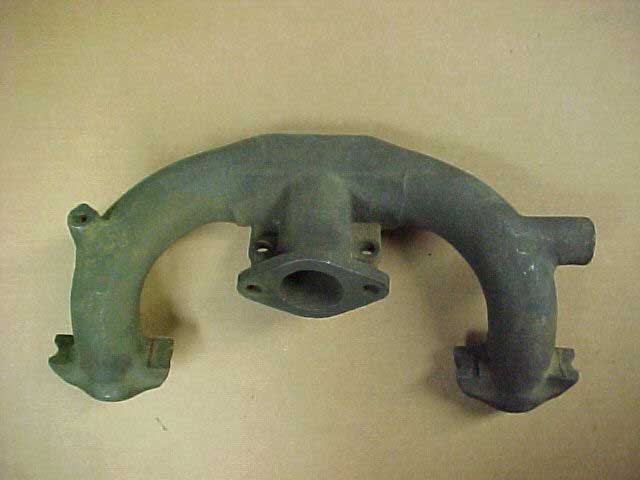 fordgarage.com
fordgarage.comThis is the earliest style Model B intake manifold which was designed originally for use with a vacuum assisted clutch.
A pipe was to go around the front of the engine to a vacuum canister mounted to the block on the left hand side. You may have seen an early B block with a cast pad and two drilled and tapped holes on the drivers side crankcase for the vacuum unit.
This vacuum assisted clutch was dropped very early in the 1932 development. The early manifold is not particularly unusual or valuable. Ford used up these early intake manifolds by placing a big reducer bushing in the front port and using it for the vacuum windshield wiper.

 fordgarage.com
fordgarage.comThis is the reducing bushing which went in the front port of the early intake for the vacuum wiper line, in place of the originally intended tube fitting for the vacuum assist clutch.

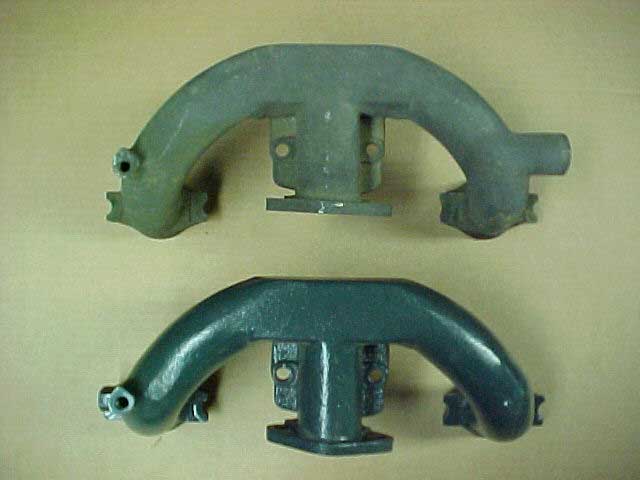 fordgarage.com
fordgarage.comThe pic above shows both the early (top) and later (bottom) style Model B intakes. On the later intake, the vacuum wiper port was made smaller and moved to the rear.
The threaded boss at the rear outboard side is for mounting the support clamp for the choke cable. The Model B used a cable control choke and GAV driver, unlike the Model A which used a straight solid adjusting control rod.

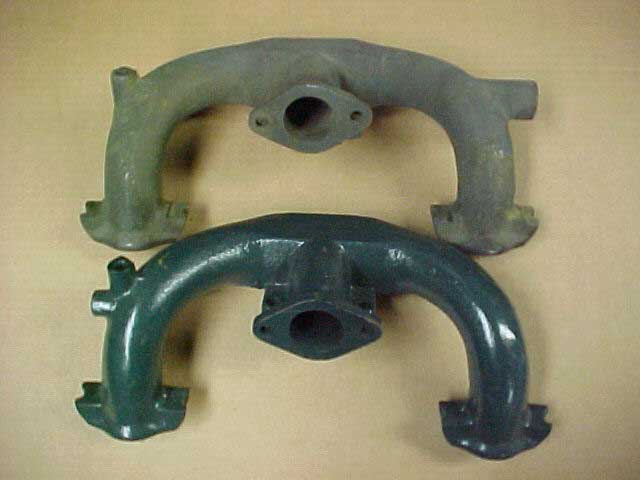 fordgarage.com
fordgarage.comAnother view above of both production Model B intakes. Early style on top, later style on bottom.
Virtually all Model B's had the carburetor holes angled slightly inboard at the rear like the typical B intake shown at the top in the photo above.

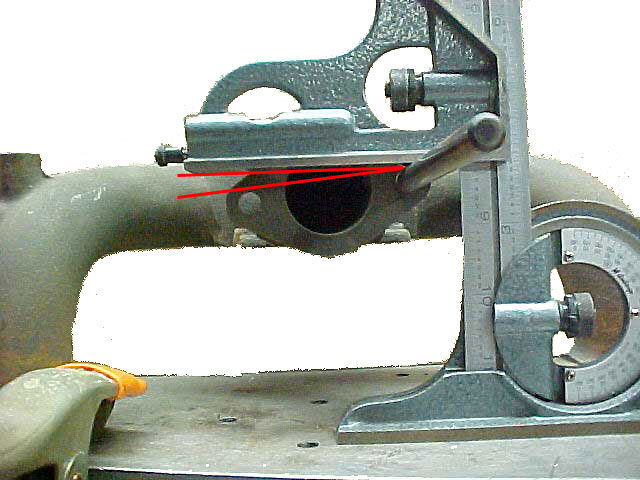 fordgarage.com
fordgarage.comThe pic above shows the angle difference of the typical Model B carburetor mounting holes in a Model B intake, relative to the engine block mounting surface.
The carburetor mounting holes in Model A intake are parallel to the block mounting surface, and do not have any angle to the block.

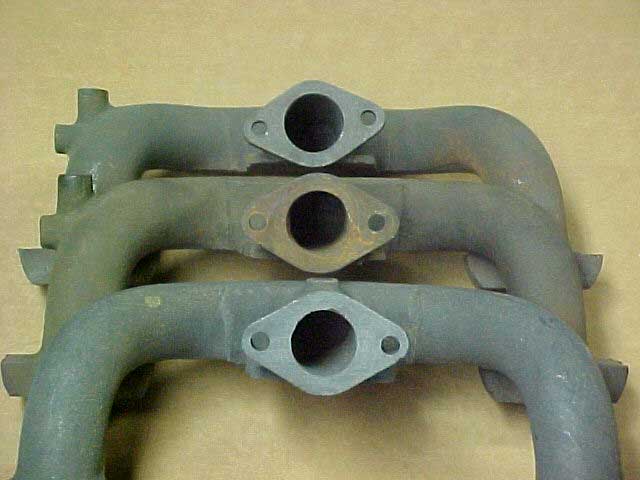 fordgarage.com
fordgarage.comThis pic above shows a standard Model A intake on the bottom, and a typical late Model B intake on top. The difference in the carburetor mounting angles is evident in the photo.
Many people like to use the Model B intake on their Model A because it has a larger vertical intake throat, and is better suited to flow the increased air volumes enabled by also using the slightly larger Model B Zenith carburetor.
This would be the ideal manifold to use on a Model A with a Model B (or A) carburetor because the alignment of the Model A choke rod would be unaffected by this B intake.
Unfortunately this manifold is extremely hard to find, and I have only ever had two in thirty-plus years of looking.
More related information on Ford Garage:
- For more Model A & B related information, use the Site Search box at the top or bottom of this page.
- Model B & 46 Choke and GAV Control Cables
- Model A & B Aftermarket Cast Iron Intake Manifolds
- Model A & B Simmons Cast Iron Intake Manifold
- Model A & B Stromberg Cast Iron Downdraft Intake Manifold
- Model A & B Thomas Dual Downdraft Intake Manifold
- Model A & B Cragar Downdraft Intake Manifold
Vince Falter
January 2002

